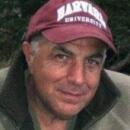Thoughts from Dr. Joe: A heroic mission shared during annual LCE Read-in

- Share via
To commemorate the birthday of Dr. Seuss and celebrate the joy of reading, the National Educational Assn. established Read Across America Day, the largest celebration of literacy in America. The premise is to boost children’s enthusiasm for reading. The research is conclusive — motivating children to read enhances achievement and creates successful lifelong readers.
I was happy to receive an email from Ugulay Sloan, the chair of La Cañada Elementary School Read-In, asking me to read out loud to a classroom of students. I recorded the date on a napkin, which I later mistakenly discarded. Thank God, Ms. Sloan sent three reminders. I would read to Ms. Lisa Fungo’s sixth-grade class.
I love sharing books. The written word is an art form. Film is a shared experience, but books are personal. The relationship between a writer and a reader is unique. As you read a book, your world is different from that experienced by other readers. Reading is a communique from one mind to another that can be retrieved many years later.
I remember the first chapter book I read, “Tom Sawyer.” I recall the part when Tom Sawyer and Huckleberry Finn set sail as pirates, floating their raft down the Mississippi searching for adventure.
I felt compelled to do the same! So, the Scanlon brothers and I spent days carrying wood to Van Courtland Park. We would build a raft, sail down the Bronx River, find the East River and float into Long Island Sound. I fondly remember pushing off. As we left the safe banks of terra firma, heading for the southwesterly current, I looked back at the shore and conjured an image of myself I’d never see again.
Because of books I’ve traveled the world many times; met the famous saints, sinners, poets, artists, kings and queens, old stars and hopeful beginners. As I opened books throughout the years, life has happened because I turned the pages. Reading excites the reader to self-activity.
I arrived at LCE early and was welcomed by Ugulay and her husband Justin. Justin, a former Marine, is a published writer. Student Yousef Labal escorted me to his class and introduced me to the other children. I would tell the story of Operation Frequent Wind via a picture book I had prepared that morning.
“This is a true story,” I told the students. “Operation Frequent Wind was the largest sea rescue in history.”
I hoped they would find the story as riveting as I did.
During the last days of the Vietnam war, April 28 and 29, 1975, United States forces evacuated more than 7,000 Vietnamese and American personnel from Saigon in front of the advancing North Vietnamese Army.
On the morning of the 28th, a secret code aired on the radio: “The temperature in Saigon is 105 degrees and rising.” The sound of Bing Crosby crooning “White Christmas” immediately followed. Upon hearing the code, those slotted for evacuation immediately left all their possessions and departed for the American embassy or predetermined evacuation points. American helicopters flew 40 straight hours ferrying women, infants, children and entire families to U.S. ships moored off the Vietnamese coast in the Gulf of Tonkin.
The USS Midway, an aircraft carrier, currently serving as a museum in San Diego, had rescued approximately 3,000 evacuees. On a deck littered with helicopters, children ran amok. On the 29th, the tower spotted a small fixed-winged aircraft approaching.
The pilot buzzed the deck and dropped a note requesting permission to land. It blew over the side. On his fourth flyover, a note reached a sailor: “Can you move those helicopters to the other side, I can land on your runway. Please rescue me, Major Buang, wife and five children.”
The captain ordered the air-boss, Vern Jumper, to clear the deck. The crew pushed the helicopters into the gulf enabling Major Buang to land.
It seemed I’d only been in the La Cañada classroom for a short time, but the bell rang, the children left and so did I, hoping as I walked across the campus that the sixth-graders understood the magnitude of what Americans did rescuing 7,000 people on the open seas. I also hoped they’d be inspired to crack open some books and expand their own horizons.
